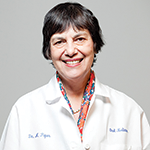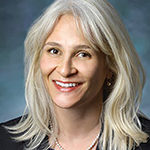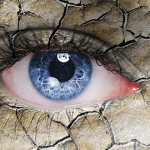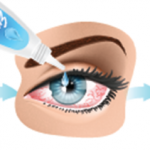
FunKey Factory / shutterstock.com
ACR CONVERGENCE 2020—Sjögren’s syndrome requires care from several specialists, and presenters at the Sjögren’s Syndrome: Dental and Ocular Perspectives session shared diagnostic and treatment pearls from their respective specialties.
Rebecca Manno, MD, MHS, of the Comprehensive Arthritis and Rheumatology Center of the U.S. Virgin Islands moderated the session.
Oral Health
Dry mouth is famously associated with Sjögren’s syndrome, but there are other oral-related problems, said Athena S. Papas, DMD, PhD, distinguished professor of diagnostic sciences and Erling Johansen Professor of Dental Research, Tufts University School of Dental Medicine, Boston. A survey of 3,000 people with Sjögren’s syndrome from the Sjögren’s Foundation found 92% had dry mouth, 66% had ulcers, 61% had trouble speaking, 59% had tooth decay and 45% had gastroesophageal reflux disease, Dr. Papas shared.
The loss of saliva has severe consequences for oral care, Dr. Papas said. One challenge in preventing problems is that the disease is often diagnosed late.

Dr. Papas
Dentists offer several treatments to help patients with Sjögren’s syndrome prevent or reduce tooth decay, including a fluoride varnish, performed every three months, and a 1.1% sodium fluoride toothpaste patients can use daily. Re-mineralizing solutions, such as a supersaturated calcium phosphate rinse (NeutraSal) and Caphosol, also help prevent tooth decay, Dr. Papas said.
Sialogogues, such as pilocarpine (Salagen) and cevimeline (Evoxac), and xylitol-containing gum are additional options to help increase saliva.
You may also want to consider a secretagogue for Sjögren’s patients. When prescribing a secretagogue to help with dry mouth, Dr. Papas recommended starting with a low dose and going slow, such as one tablet a week, then two tablets a week, and working up from there. If one secretagogue does not work, try another. Patients may find secretagogues help with other dryness issues, such as vaginal dryness, as well.
Omega-3 fatty acid supplements have also been shown to help dry mouth symptoms and overall periodontal health in patients with Sjögren’s syndrome, Dr. Papas said.
For patients who have trouble speaking or swallowing, options such as vitamin E, mineral oil or olive oil can potentially help.
Eye Health

Dr. Akpek
Although many ophthalmologists treat dry eye, they may not always know in detail the connection between dry eye and Sjögren’s syndrome, said Esen K. Akpek, MD, the Bendann Professor of Ophthalmology and Rheumatology at the Wilmer Eye Institute at Johns Hopkins University School of Medicine, Baltimore, director of the Ocular Surface Disease and Dry Eye Clinic at Wilmer, and associate director of the Jerome L. Greene Sjögren’s Center at Johns Hopkins Bayview Medical Center.
A 2016 survey from the Sjögren’s Syndrome Foundation revealed that 98% of patients complained of dry eye, Dr. Akpek reported. Among the patients in the survey, only 5% were referred to a rheumatologist for a Sjögren’s syndrome evaluation by an eye care provider. This is because Sjögren’s syndrome is often under-recognized and underappreciated by ophthalmologists, Dr. Akpek said.
One study showed that among patients with dry eye, 25.9% had an underlying disease, such as Sjögren’s syndrome, lupus or rheumatoid arthritis, Dr. Akpek said.1 Another study showed 11.6% of patients with dry eye had underlying Sjögren’s syndrome.2 Dry eye among those with Sjögren’s syndrome frequently affects quality of life and has an impact on everyday tasks, such as reading speed.
Although dry eye in Sjögren’s syndrome is primarily due to a deficiency of aqueous humor, all tear film layers will be affected over time, Dr. Akpek explained. Diagnostic tools used by ophthalmologists for dry eye include tear break-up time and tear osmolarity.
Physicians may traditionally think of dry eye as the primary eye problem for those with Sjögren’s, but extraglandular findings also are common, including vision-threatening findings, Dr. Akpek said. These can include iritis, anterior and posterior uveitis and peripheral corneal neovascularization. Dry eye may precede these other findings by a decade. “The eye seems to be a barometer of disease activity,” she said.
Neither rheumatologists nor ophthalmologists should forget to consider Sjögren’s syndrome as a possibility in men, particularly if they have aqueous-deficient dry eye, Dr. Akpek said.3 Physicians may not think about this because the disease is more commonly associated with middle-aged women.
Ophthalmologists who treat dry eye in Sjögren’s syndrome patients take a stepwise approach depending on its severity. They educate patients, suggest the modification of environmental factors and addition of lubricants.
Both ophthalmologists and rheumatologists may suggest artificial tears. If there is a strong need for artificial tears, the patient should use preservative-free ones, Dr. Akpek said. If the patient needs tears more than eight times a day, they should look at other treatment options to avoid depleting natural tears. “More is not better with artificial tears,” she said.
After these first steps, ophthalmologists may prescribe topical immunomodulators, such as lifitegrast and cyclosporine A. They may also recommend tear duct plugs, topical corticosteroids, secretagogues, scleral lenses and autologous serum tears, among other treatments, Dr. Akpek said.


